The Article
D90LE DAC From Topping
29th November 2022
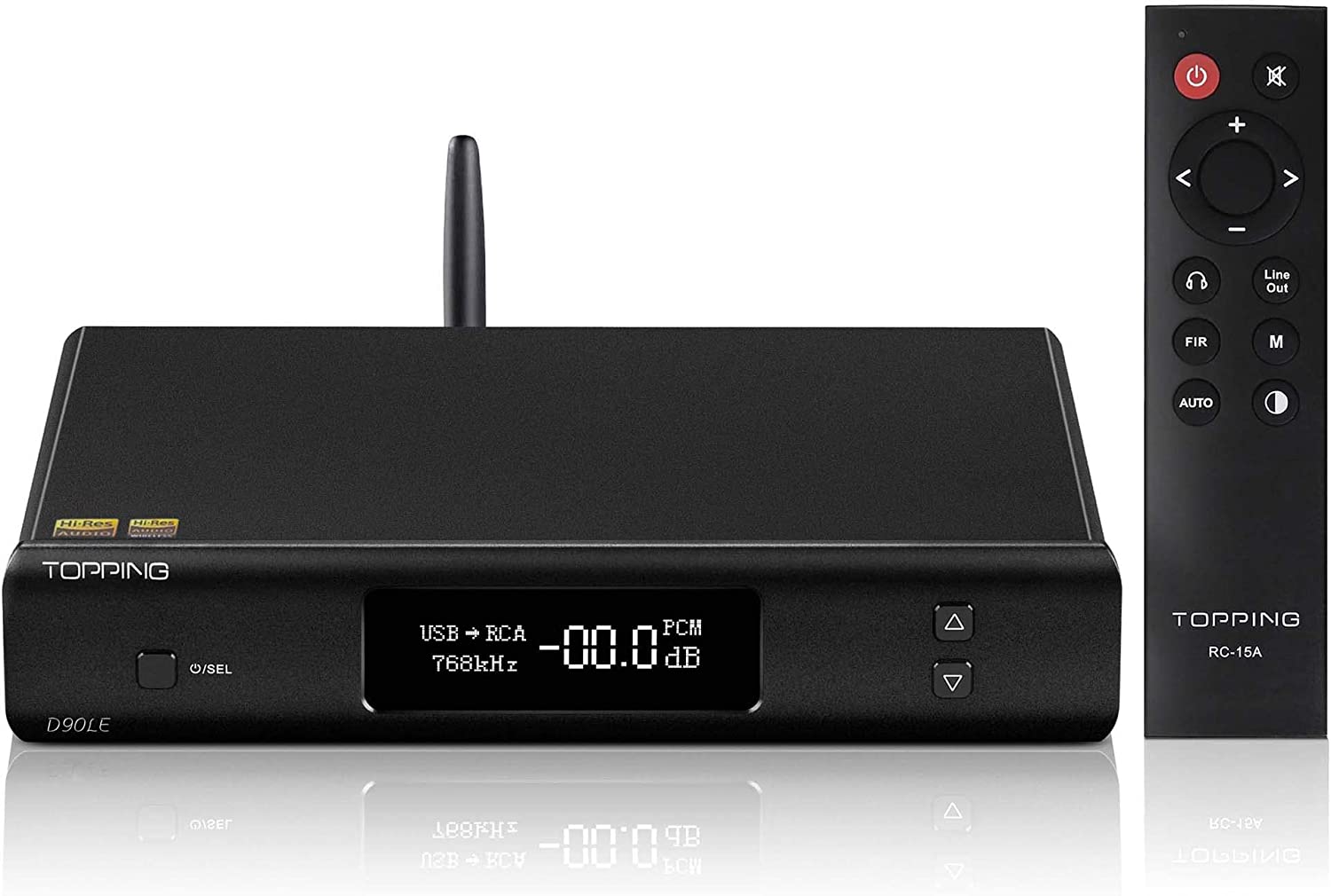
A fully balanced, high-end desktop DAC including Bluetooth, Paul Rigby does digital with the Topping D90LE
Before I talk about this product, I want to talk about what’s behind it. At least in my case, in the UK. I’d like to focus on the brand for a minute. And you.
Which on a circular level, directly reflects onto this product. It’s a point that is as important as the product itself. Especially these days. Topping has been around for some time now. Actually Topping, as a brand, has been in the HiFi enthusiast’s vision for quite a while now. Such familiarity is essential for success. Doing ‘well’ in the HiFi industry is mostly about hanging on in there and maintaining consistency, waiting to be noticed and, above all, accepted, at some point. Once your feet are under the table, you’re in and you can make a decent business in co-operation with the customer base.
I have to hand it to Topping, the company has given it a real go. It’s been persistent, it’s worked with its customers, it’s been dogged and it’s been very serious about establishing itself in the HiFi industry.
I first heard of the company when you could only see its products from outlets based in Hong Kong. The D90LE DAC I’m reviewing here though arrived from its official UK distributor, Electromod. Topping has come a long way.
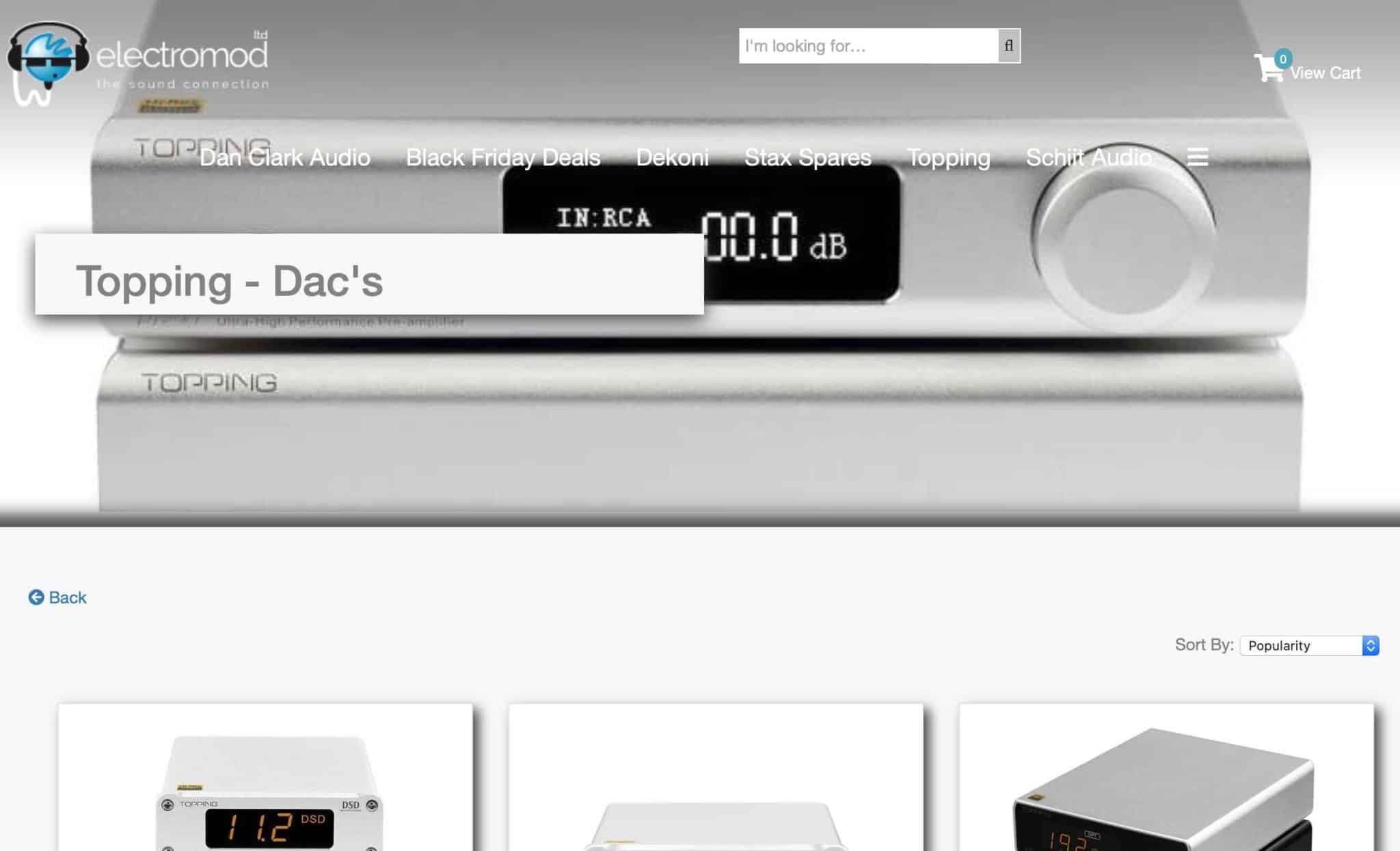
Chinese HiFi still breeds mistrust amongst some HiFi fans. Partly because China is such a long way away. Partly too because you often buy blind and you don’t see them in High St. dealers. There’s also, often an inherent lack of trust in Chinese HiFi because many users lump good Chinese-derived HiFi with the bad and then assume it’s all bad.
And let’s not forget that the now hallowed Japanese HiFi products used to be viewed in exactly the same way. When I was a kid in the early 70s, if I asked someone about a piece of technology they’d say, “It’s made in the UK/Germany/France/USA…none of that Japanese rubbish.” Japanese tech was derided then later on feared, back then.
And look how Japan grew from there, eh? It’s the same here with China and its tech. There’s some good Chinese companies out there. Topping is one of them but I like Topping’s move to secure a UK distributor, in this case Electromod.
Yes, Topping sells on the likes of Amazon – and that’s a useful outlet for a number of reasons and fits right in for a number of users – but the addition of a distributor is a good move.
What Electromod – in fact any good distributor – gives you is HiFi experience to draw upon, someone who knows what they’re talking about and is not a kid in a call centre. You get a local phone call if problems occur. A human voice at the end of that phone. Someone who will work with you to correct issues if any issues do occur. And so on.
In short? As I sit here ready to review this DAC? I look at Topping now as a professional HiFi company who is providing evidence that they care about their customers and backing that up with investment. So far? So good then.
THE ESS CHIP
The headline feature of this DAC is the DAC chip itself, which you might call – obvious. That’s not always the case though. Sometimes, DACs will shove in a decent chip and then pay more attention to other areas of the design to enhance performance.
Here though, the DAC chip is the main squeeze. Partly because Topping likes or rather liked its AKM chips. But AKM is still recovering from a disabling factory fire so Topping has turned to ESS instead.
Now Topping has always preferred AKM to ESS and I must admit that I have followed that same mindset. I always found AKM to produce a naturalistic sound output and AKM’s chips were always my favoured digital source. Topping’s preference though also included a ‘thing’ going around the industry that says that ESS chips have a ‘hump’ of distortion that may threaten sonic performance. I have to say that I haven’t heard any negative ‘hump’ effects myself. That might be because the ESS-based DACs I’ve heard are basically good designs, which may prevent any possible sonic issues. Even so, that was the word on the HiFi street.
Here, Topping uses an ESS9038PRO chip. It apparently bypasses any perceived hump effects by pairing each of the included eight channels to produce four channels of balanced output. It’s this tweak that, says Topping, gives you enhanced performance from this box.
AND THE REST?
The D90LE offers a relatively small footprint of 222 x 160 x 45mm with a weight just over 1kg yet it’s large enough and stylised enough to look like a piece of grown up HiFi, if you get my drift. That is, the D90LE has the aesthetics and styling to fit right into and onto a listening room shelving rack. It’s demure enough and conservative enough, without any outlandish, flashing lights or quirks, to slot into any high-end digital system. It has the ability to blend into the background but to do so with a measure of style.
Before we look at the furniture adorning the chassis, be assured that you do get a remote control. It’s the typical Topping offering familiar to many other Topping products that can change the volume, add mute, input selection, display screen brightness plus filter choice.
I’ve said before that I dislike the user-defined filter ethic. I would much prefer to be given a single balanced, built-in, factory set, default filter, instead and for the instructions never to mention the word. Now some users will riffle through this filter selection and won’t hear any differences and that’s fine. Thing is though, I do. Any many others will too.
As it is, there’s too much leeway for an inexperienced user to accidentally select the harsh, bright, brick-wall filter, for example, then that user will be convinced that the D90LE was overly clinical and then they may dump the entire box as a bad lot. Also, for the same beginner, if filters have to be here at all, then I wish Topping would ‘filter’ the incomprehensible filter names and give them real-world terms instead.
In practical terms, the filters act like tone controls. That’s the end sonic result of selecting these things. So, if you must include them, give them tone-like, real-world names instead of merely repeating the names printed in ESS’s chip tech documents. There’s only seven filters. There’s a thesaurus available if they have difficulties thinking up terms. Topping has always refused to take responsibility for this area. They’re wrong.
TALK TO BOB
Imagine, for a moment, if this product was labelled ‘Apple’ and you worked for Apple and you told your manager – a nice guy named Bob, incidentally – that its end users were going to have to tackle terms like Fast Roll Off Corrected Minimum? Despite being a nice guy, Bob would laugh in your face and then send you on Gardening Leave. But hey, that’s Bob for you.
For the record? I would select Mode 4 in filter terms which is Slow Roll Off Linear, as the best balanced sound. The default is Filter 5, Fast roll off linear. Filter 5 doesn’t sound as good. Again, that concerns me because many people – beginners especially – won’t bother to change this option. Select it then cover the filter button with black tape and never talk about it ever again with anyone. Even family members.
SCREEN DUMP
On the front panel is a clean, white OLED screen. Some people have criticised this screen because it’s not full colour, doesn’t feature a host of touch-screen capable icons and, no doubt, doesn’t include Netflix. But look, I’m not watching TV here. I just want the information supplied simply and fast. The D90SE does that. That’s all that matters.
The screen shows the input, output, sampling rate, volume and sound format (i.e. PCM, DSD or MQA). To the right of the screen are two volume buttons. To its left is a power button. If you power on and keep this button pressed down, you enter the Setup Menu where you can change the Auto Power on and off settings, Screen Brightness, pre-amp mode or DAC mode, enable or disable Bluetooth and Line Out options – so you could instruct the DAC to output to XLR only or RCA only or both. Then there’s filter settings for PCM and DSD plus other settings for the ports, polarity, different volt outputs for the likes of powered speakers and quirky preamps and the like.
The selection is pretty comprehensive.
The rear of the chassis offers, from the left, a pair of XLR outputs, a pair of single-ended RCAs, IIS input, coax and optical inputs, Bluetooth, USB input, AES input then, on the far right, an IEC power socket and a rocker power switch.
In resolution terms? USB and IIS (IIS is, incidentally, the same thing as I2S.) can handle up to 32bit/768kHz PCM and native DSD512. Coax, optical and AES can handle up to 24bit/192kHz or DSD64.
So, how does this one sound?
SOUND QUALITY
I hooked an Audiolab CD transport up to the Topping DAC and played Emmylou Harris’ Red Dirt Girl (Grapevine) and played the first track, The Pearl. I’m not that pleased with the mix of this track which I find too busy, too much, a bit claustrophobic even. It’s densely packed. There’s too many instruments seemingly squeezed into too small a space. The reverb seems to rather overdone while cymbal splashes sound a little constricted.
Any DAC will need to make some sort of sense of this, of course. It’s quite a challenge.
SINGLE-ENDED
I began in single-ended mode and straight away, if you’ll forgive my Brian Wilson approach to HiFi, I could hear good vibrations emanating from the Topping.
What specifically grabbed me was the stereo image. That area right at the centre of the speaker pair. On this track, I am used to that car-crash pile up of instruments, vocal and effects but the Topping, bless its little cotton socks, managed to sort it out into some semblance of order. The lead vocal had space around it while the lead electric guitar was isolated from the earlier mess. It was lovely to hear an acoustic guitar distinctly offering a metallic strum effect while the percussion was suddenly free to manoeuvre. I could even hear some secondary percussion now.
That the Topping could give this track a sense of focus was an achievement all on its own and, for me right there and then, was worth the price of admission for this box.
BALANCED PLAY
I wondered what balanced play would sound like. Before I could hear the output from the balance connections, I had to enter the Settings and tell the Topping that I wanted to output to XLR. Once done? I heard music.
You know what an accordion looks like before you pull it apart? All folded and scrunched up? That was this track BT: Before Topping. Single-Ended mode actually improved that situation. Balanced mode pulled that accordion far apart adding space in between instruments, pushed instruments left and right, giving a new sense of relaxation to the soundstage and giving the lead vocal space to work in. Without elbows bumping.
BLUETOOTH
I then tried Bluetooth and drafted in my Astel&Kern Kann Alpha and played The Doves’ Universal Want LP and the title track from the same via aptX HD at 24bit/96kHz. Now look, Bluetooth isn’t perfect but this Bluetooth replay was one of the best Bluetooth performances I’ve ever heard from a DAC. The vocal was remarkably coherent. Focused with a sense of direction. No obvious high-frequency noise to speak of until I heard the odd guitar crescendo, slight wobbles in the upper reaches of midrange gave away that this was a stream but bass was strong and, on the whole, I was impressed. It almost gave me hope that Bluetooth could actually amount to something.
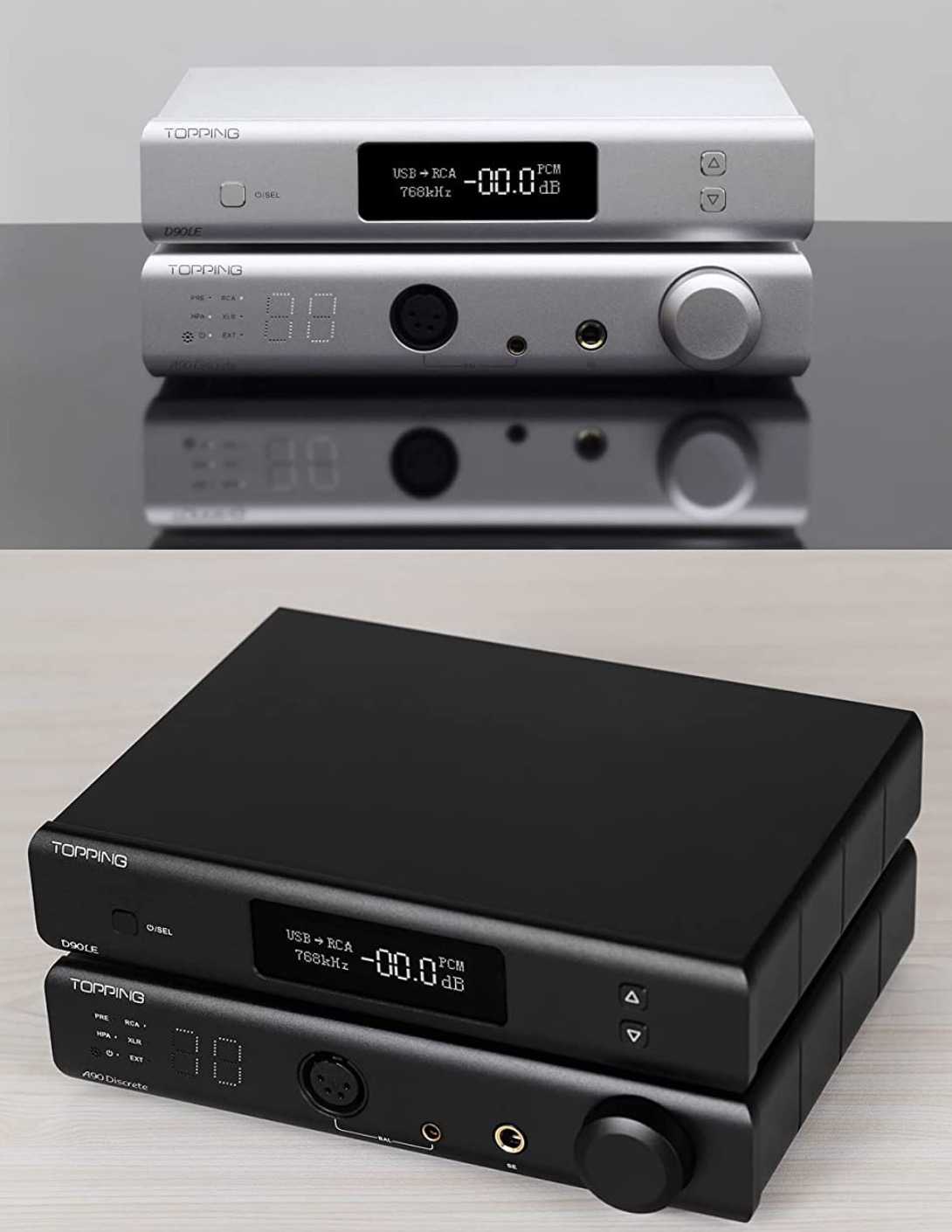
Incidentally, the transition on this track from indie rock to acid house is just sublime.
LDAC PLAY
But that’s not all, I then played the same track again, this time via the LDAC codec and that sounded like the earlier transfer from single-ended mode to balanced mode. The stereo image via LDAC opened up, became less a point in the distance and more an area to explore. Bass was almost organic, in its bouncy roundness while the reverb hanging off the vocal was almost dreamy.
No this was the best Bluetooth performance I’ve ever heard from a DAC. Bluetooth has never…never had me waggling my foot, bouncing the other knee, swaying my head from side to side and playing air drums all at the same time. The D90LE had me doing just that on this track. Blimey.
OPTICAL PLAY
I then leapt from my chair and connected the same digital audio player into the rear of the D90SE with an optical cable and that changed the sound to a more trim and direct source. A concentrated source with sharper beats, impactful bass and a faster pace.
To be honest though? I kinda missed LDAC Bluetooth. Good grief, never thought I’d say that.
SOUND MODE
I must insert a quick mention of a sort of EQ option called Sound Mode which I could find no mention of in the manual. This review was completed with this option set to Off but you can turn it on for a ‘valve’-like sound or a ‘transistor’-like sound. Basically, the valve option softens the mids a tad, muddying detail. Transistor sharpens it slightly, adding unnecessary corners to detail. To me, this option is a useless gimmick. I would recommend that you avoid.
WITH BLUESOUND NODE
And before I end? This DAC is an ideal upgrade for the Bluesound Node. I connected the D90SE to the Node via coax cable and then ran balanced cables from the D90SE into my HiFi and that brought the Node to life. Streaming Amazon Music provided a big, open soundstage with plenty of air and space, giving a larger than life sound.
I ran though Bon Jovi’s You Give Love a Bad Name and what I heard was fun and very listenable. Yes, there was that streaming tightness around the upper mids as dynamic reach hit a ceiling which was nothing to do with the Topping I hasten to add but, within those limits, there was plenty to like here.
Frequency discipline was respectable, indeed. I was happy to see that the mids didn’t sound clinical. They wandered up to the edge but never became an issue while bass was punchy and aggressive in a good way. The lead vocal from John Bon John Bon was pretty smooth for a stream.
In addition, the track Supervixen from Garbage’s self-titled album via Qobuz was similarly full of energy and I was happy to hear real depth round the stereo image. It wasn’t quite 3D in effect but the effect did add a richness to the soundstage.
CONCLUSION
To state the obvious, this is a feature-packed little unit. It does a lot and sounds excellent. The choices and options available are much appreciated, the interface works well, I loved the OLED screen because I forgot all about it when I was using it which is the biggest compliment I can give it. Each source option was well designed, was efficiently implemented and provided superb performance for the money.
And yes, I would say that this DAC, despite the price, provides real value for money. For many users out there, this little box might very well revolutionise their digital system.
TOPPING D90LE DAC
Price: £800
Website: https://www.electromod.co.uk/products/ToppingUK/
GOOD: single-ended play, balanced play, overall design, interface, price, overall sound quality
BAD: The filter settings
RATING: 9
[Don’t forget to check out my new Patreon Page at www.patreon.com/audiophileman, for exclusive postings, giveaways and more!]
REFERENCE
Apple iPhone
Astell&Kern Kann Alpha DAP
Q Acoustic 3020 speakers
Tellurium Q & QED cabling

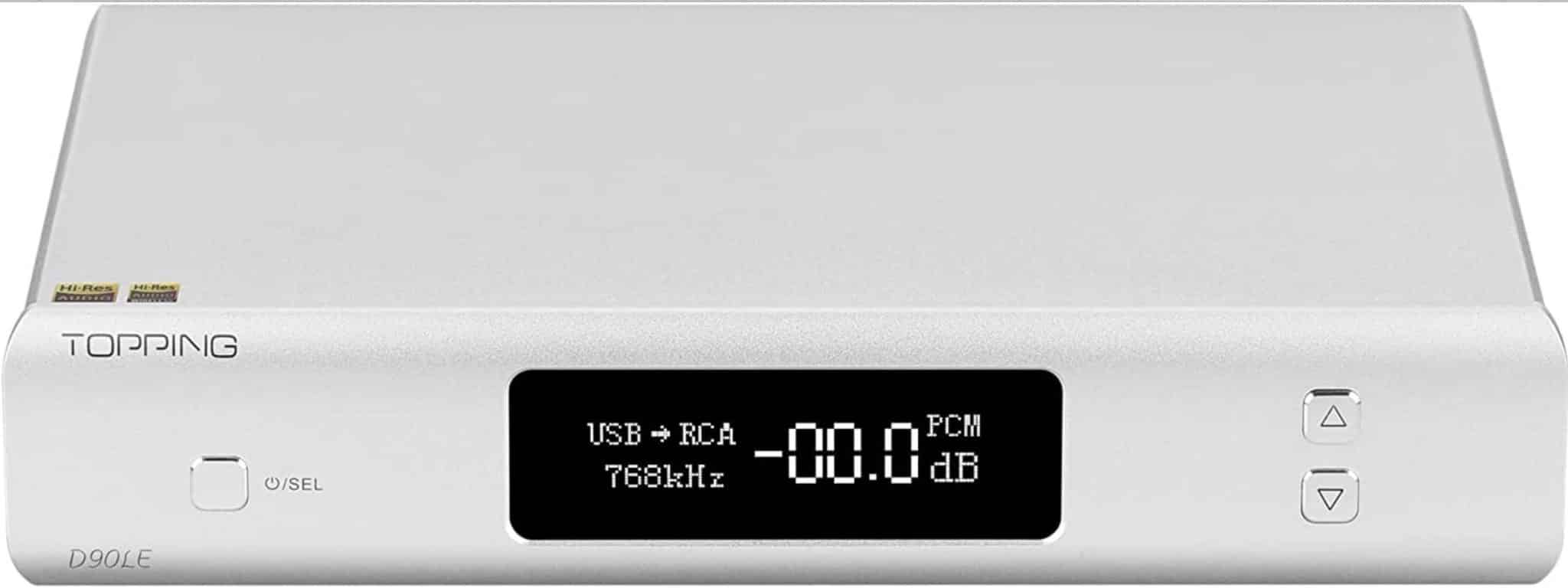

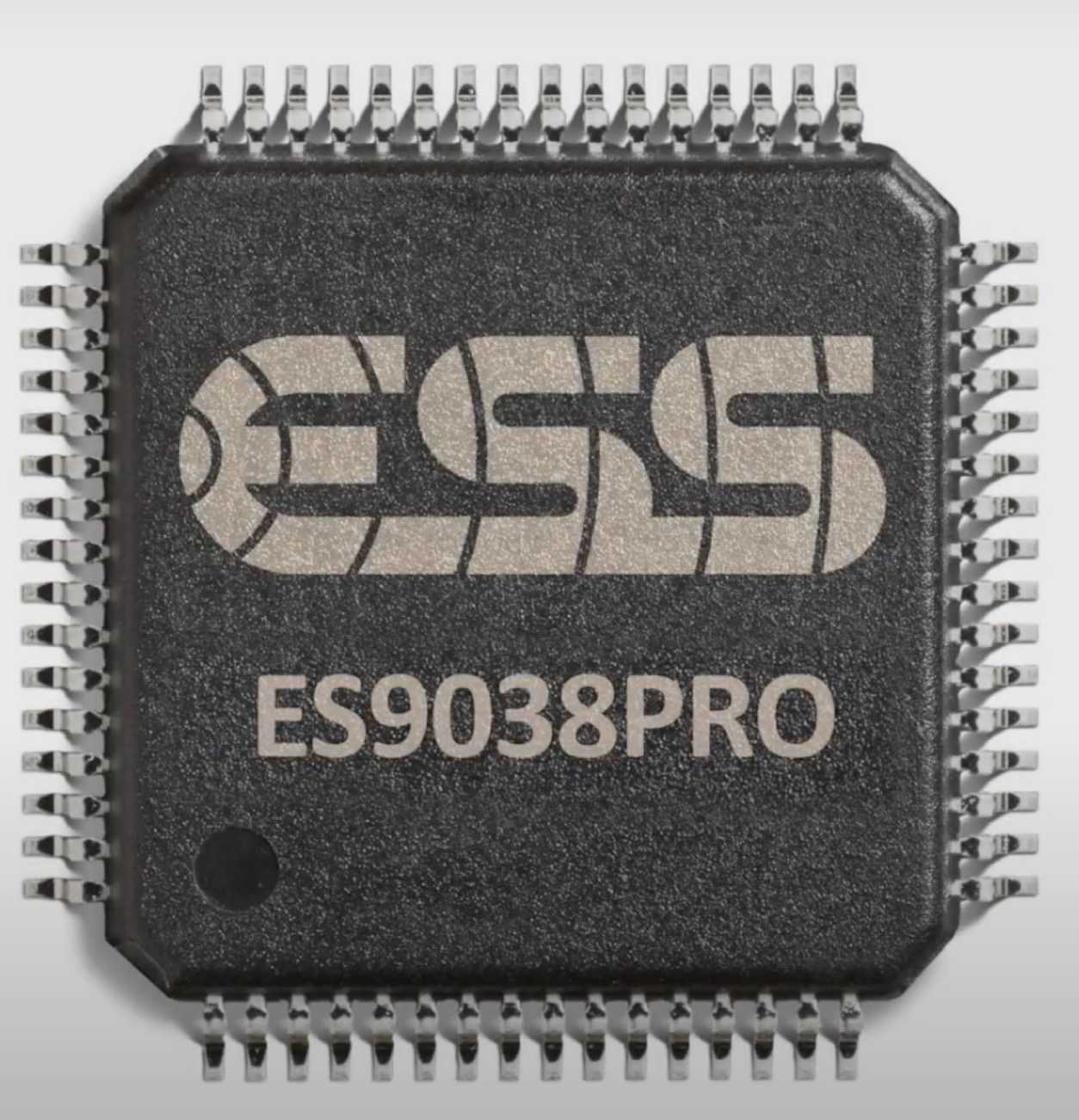
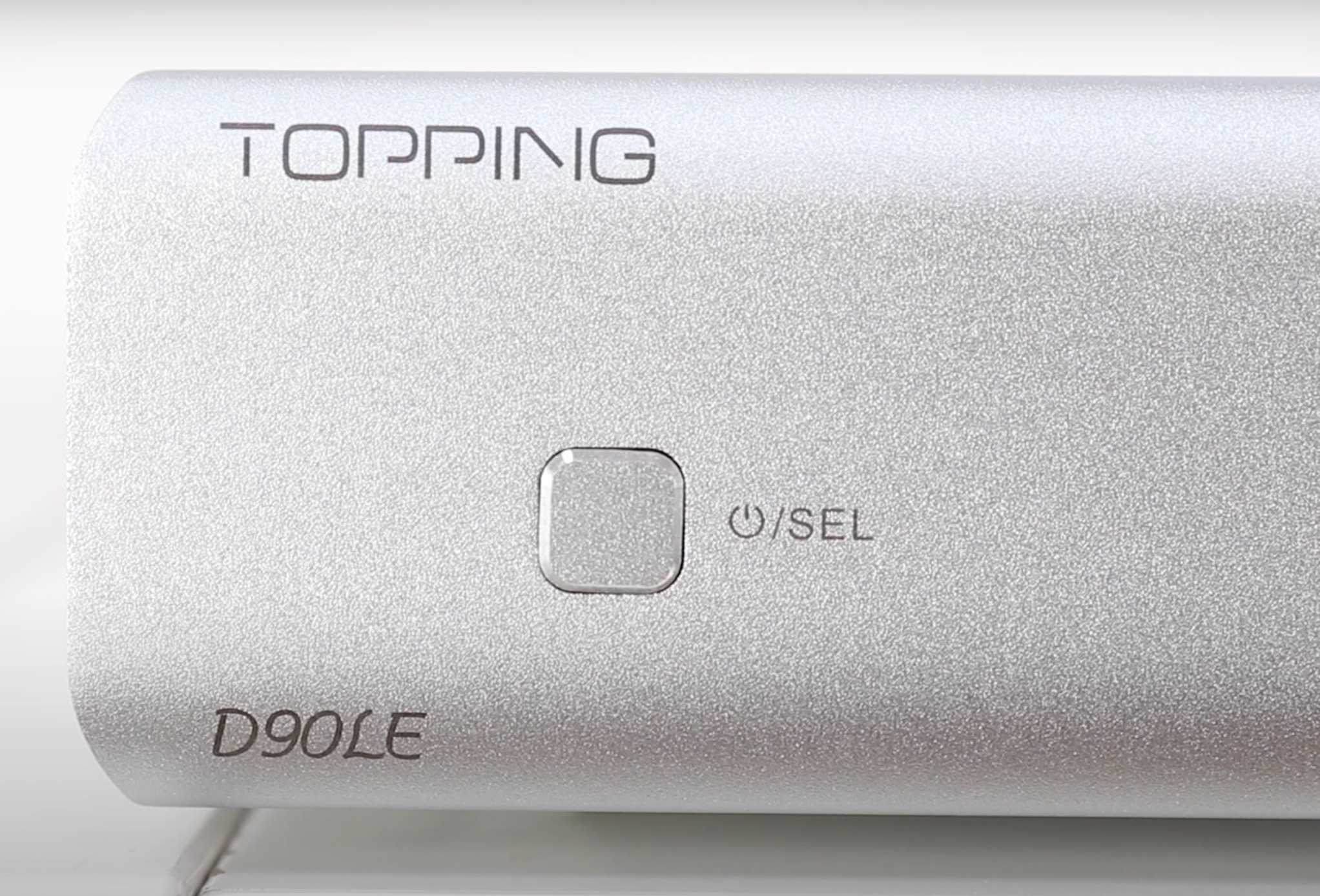
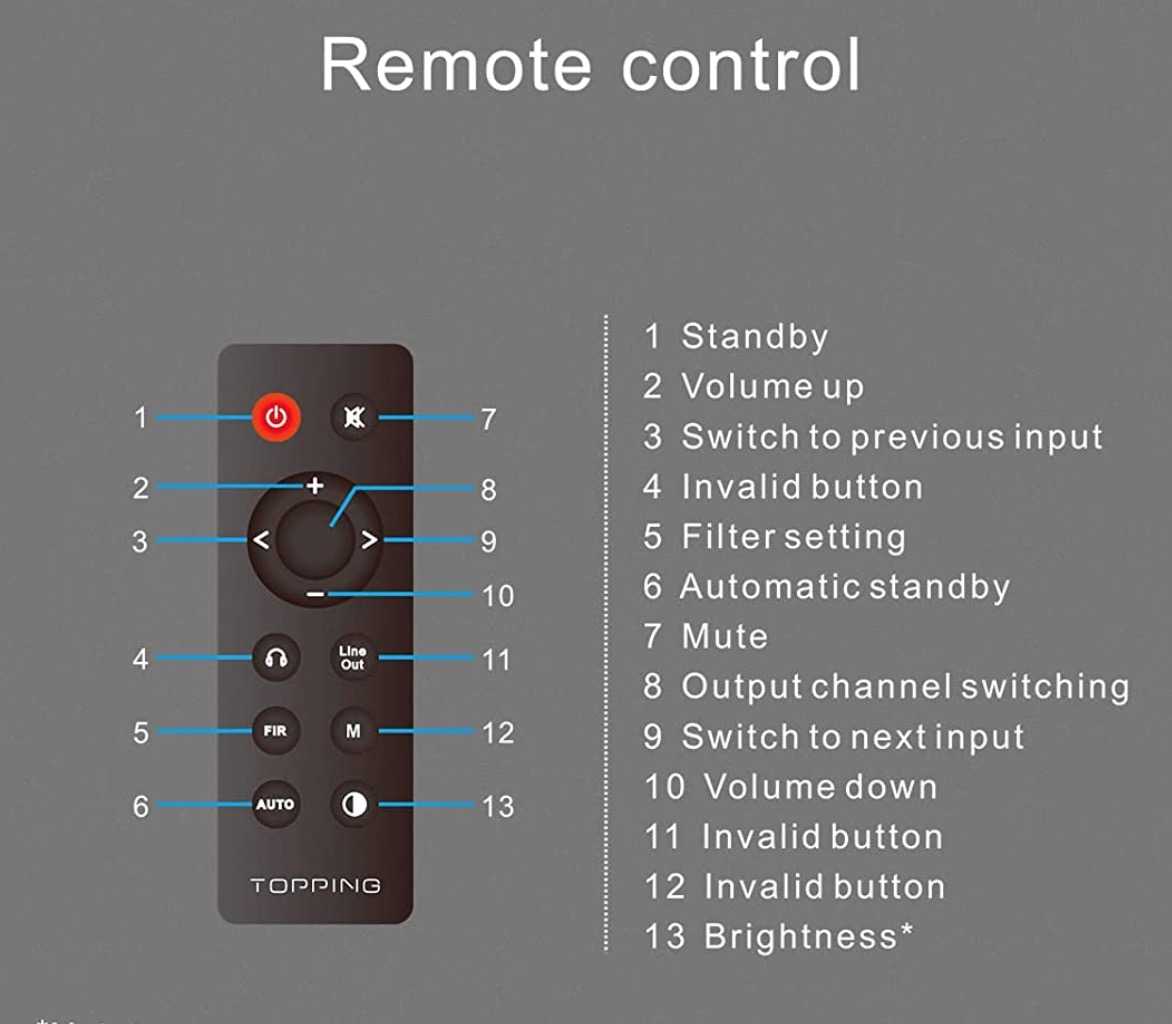
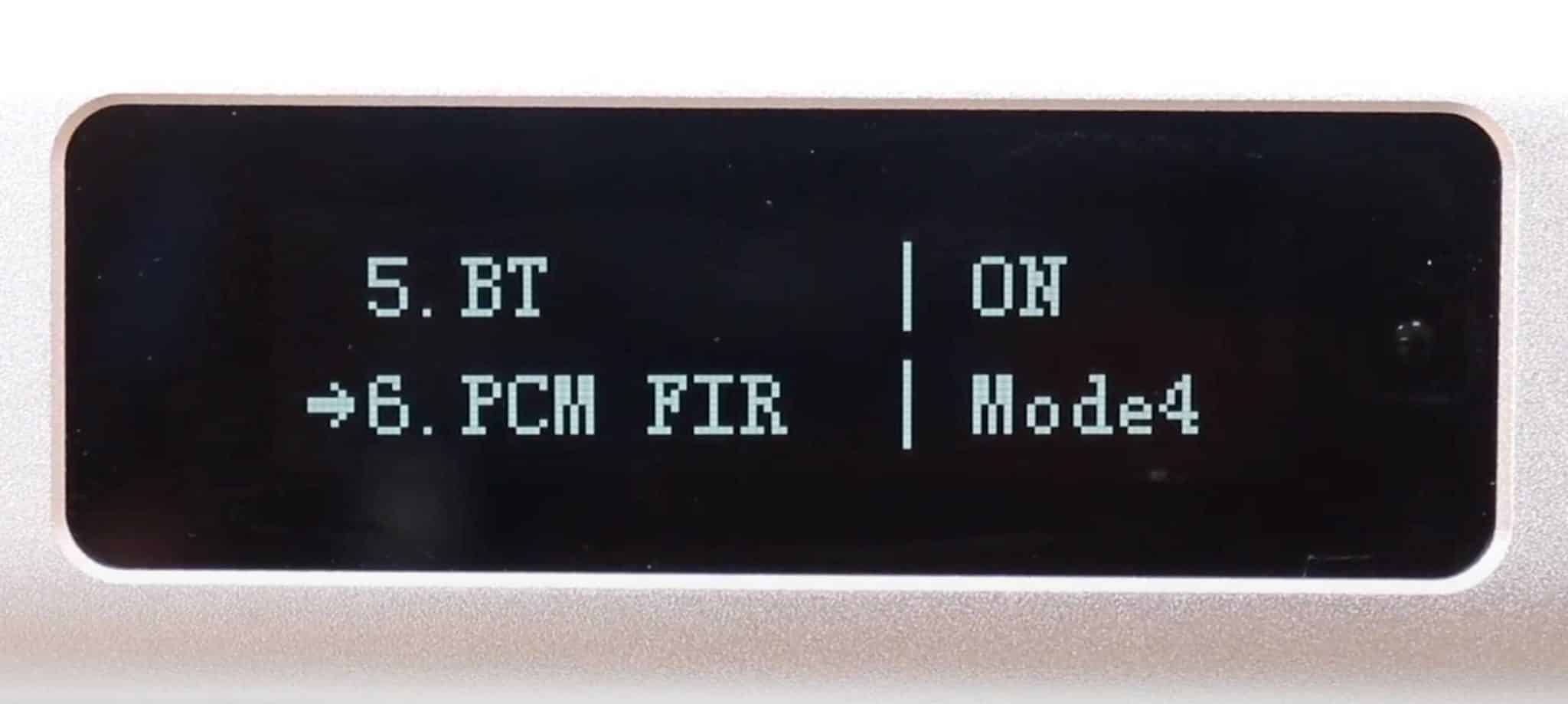
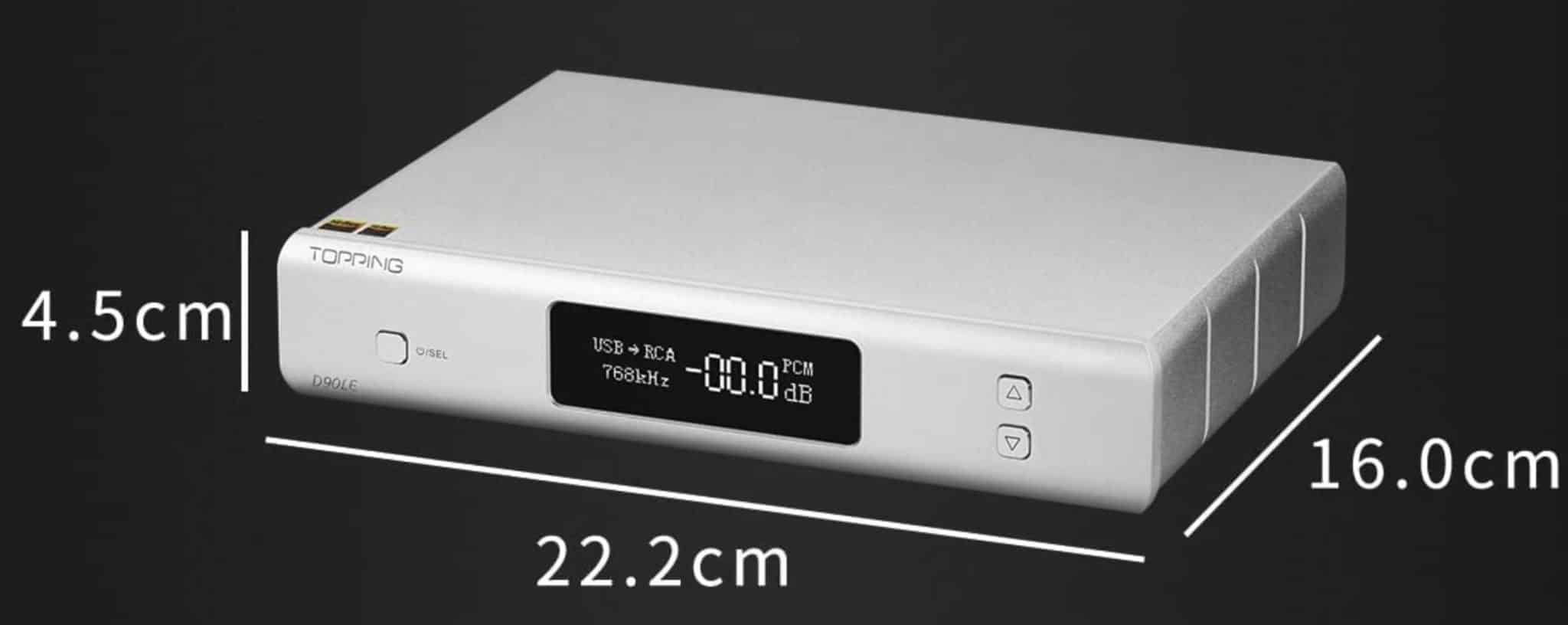
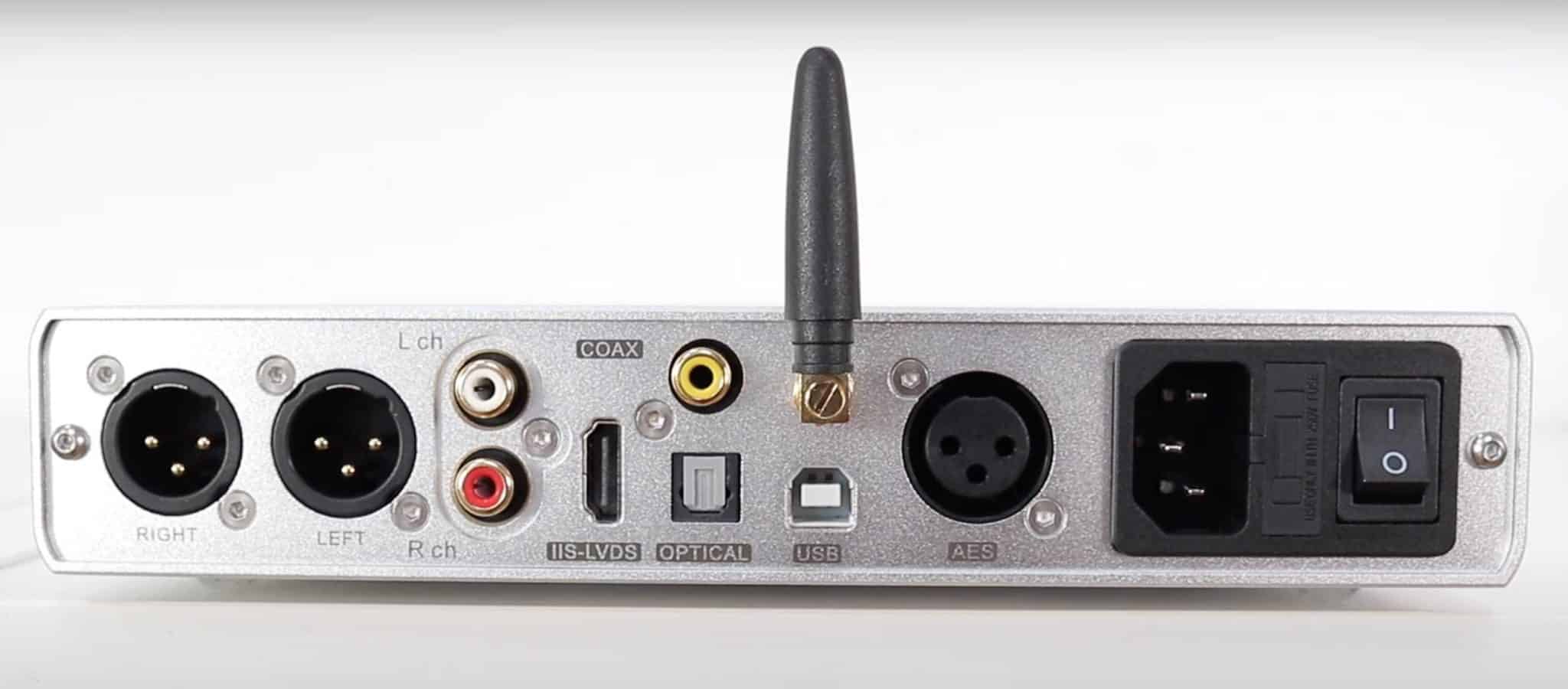
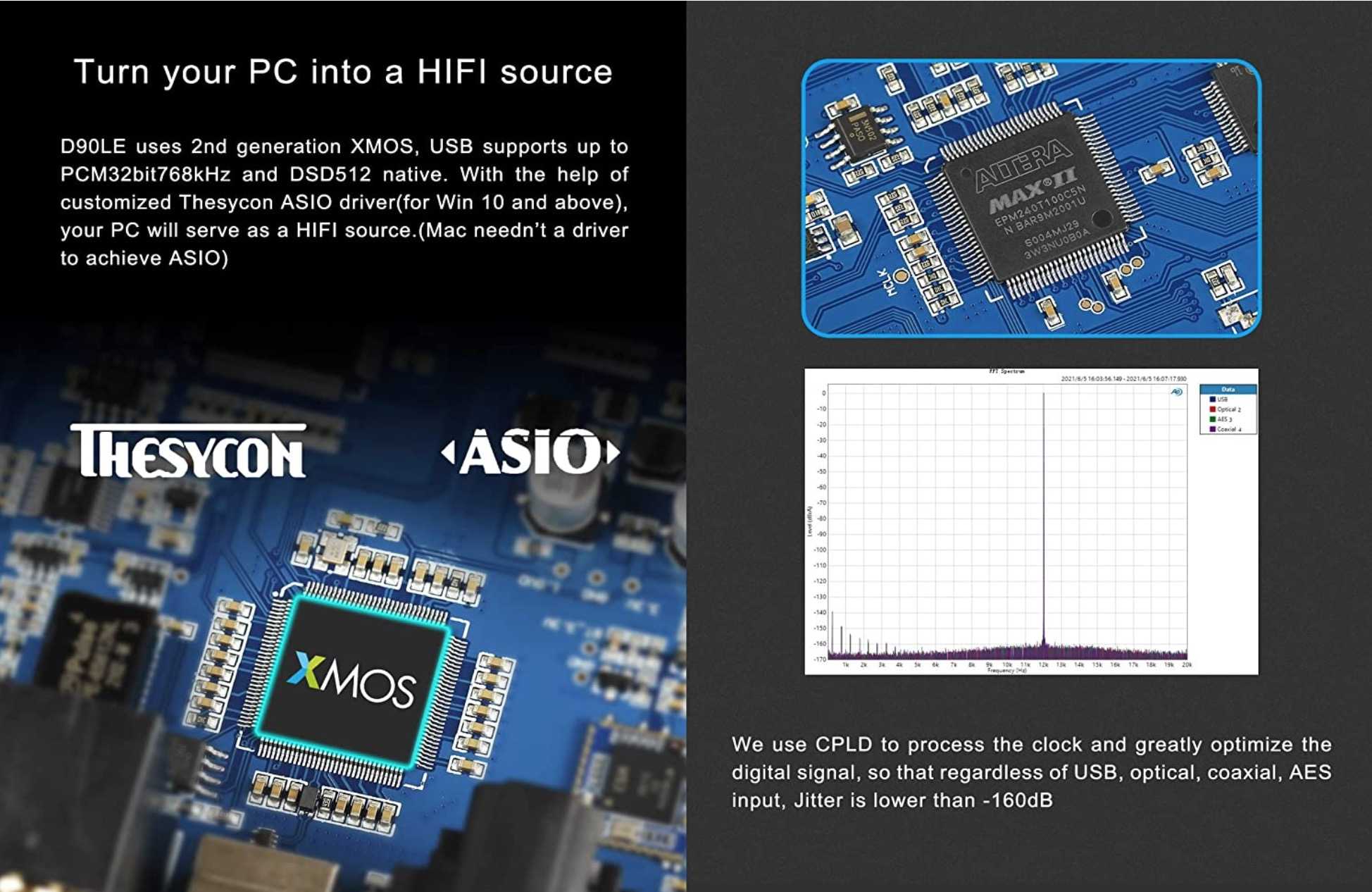
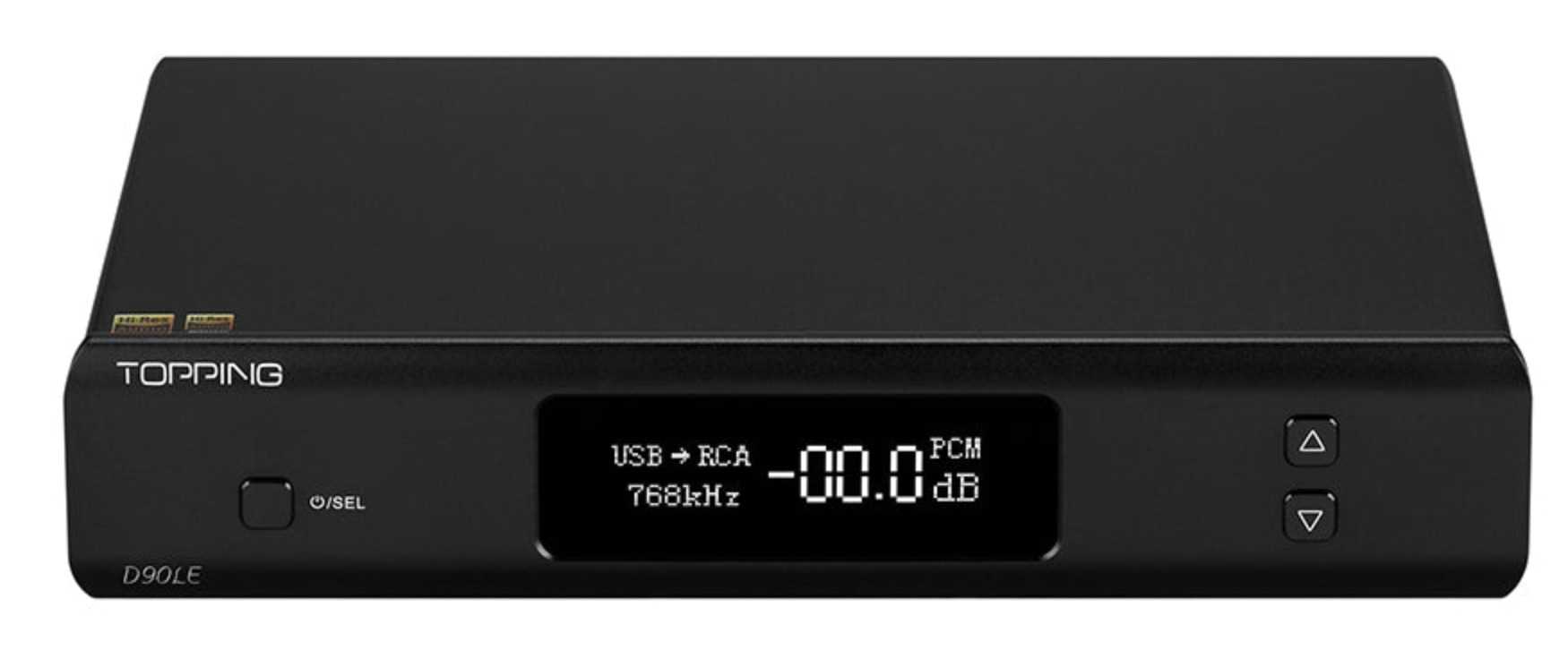
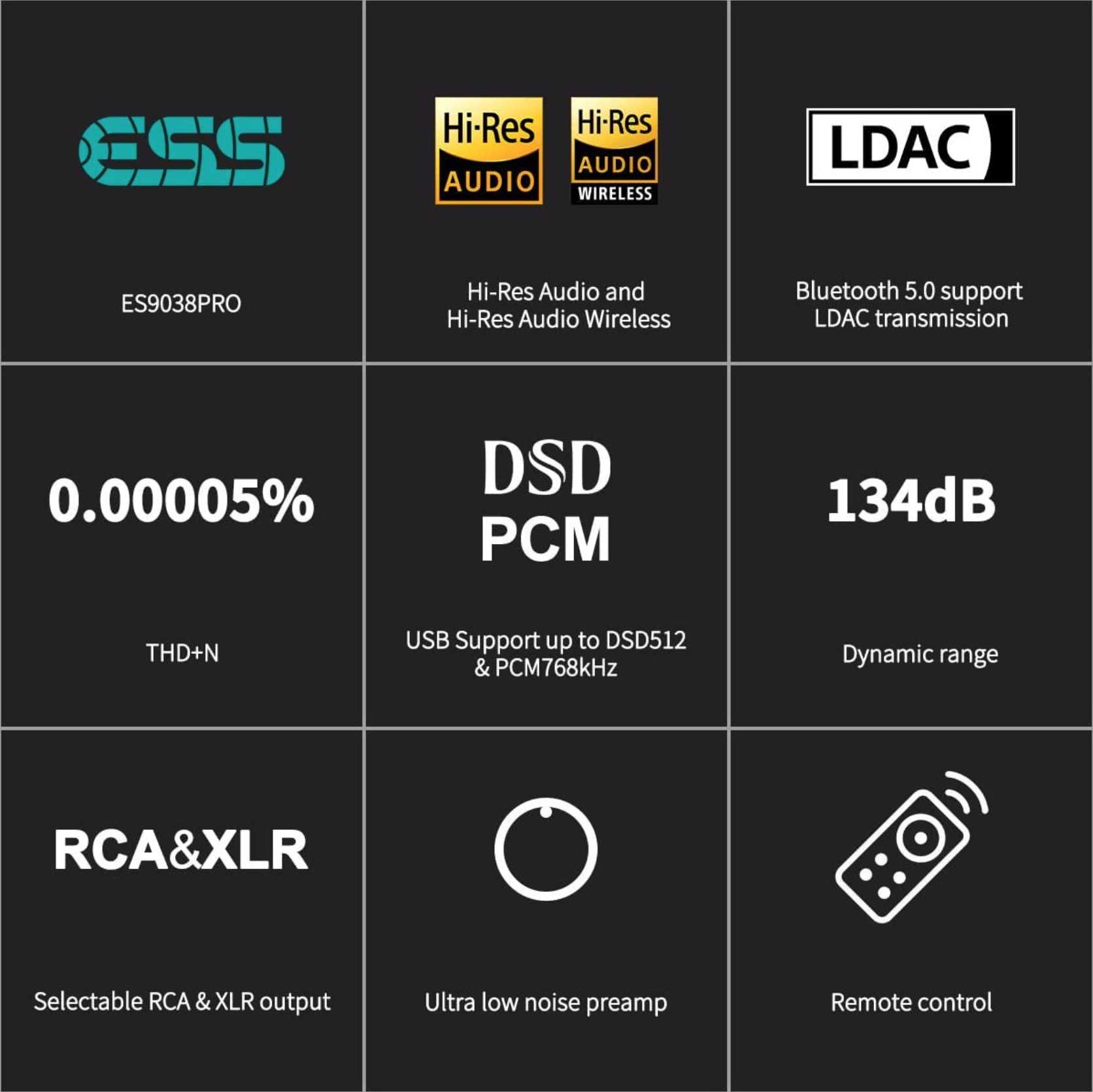
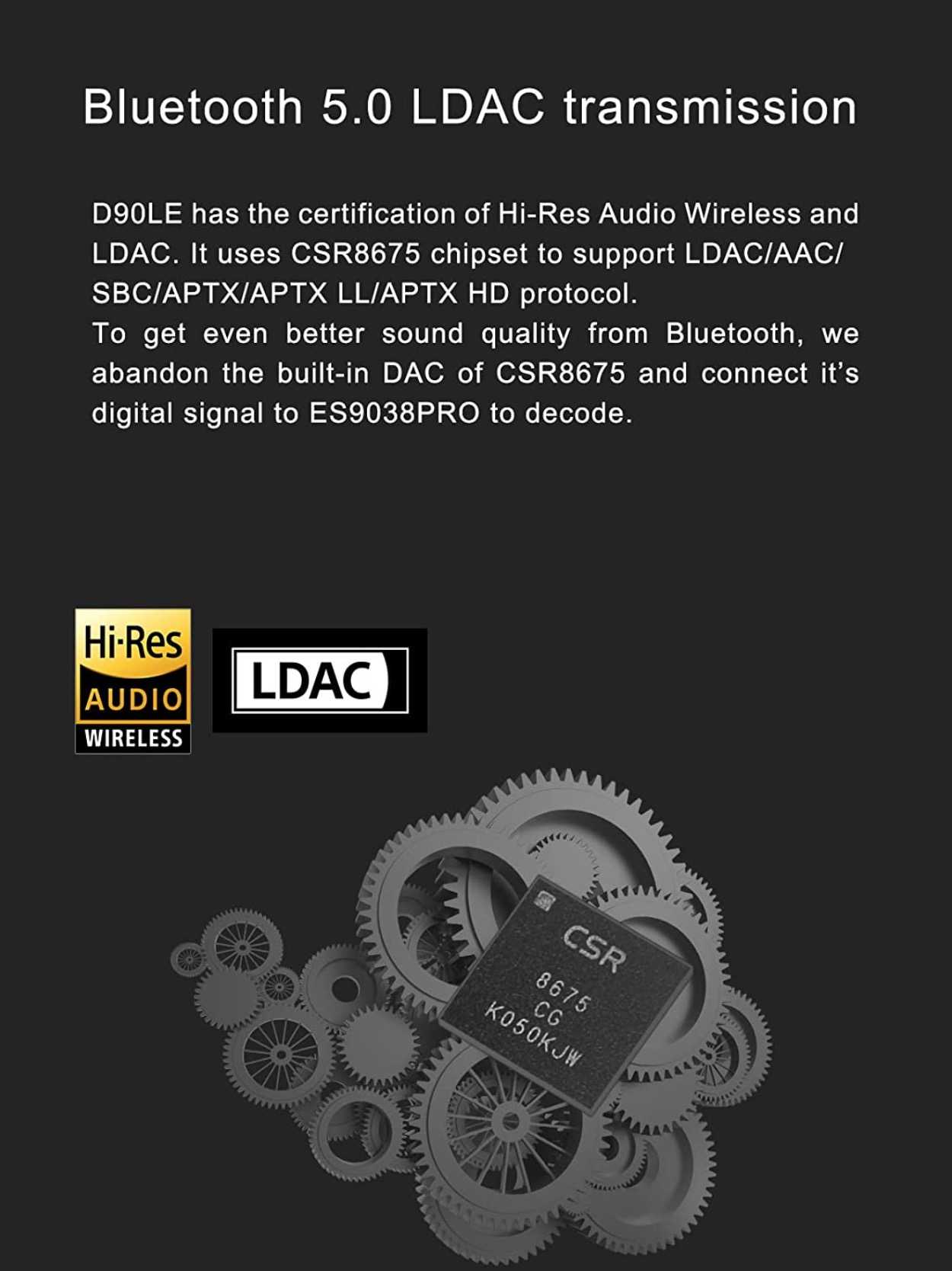
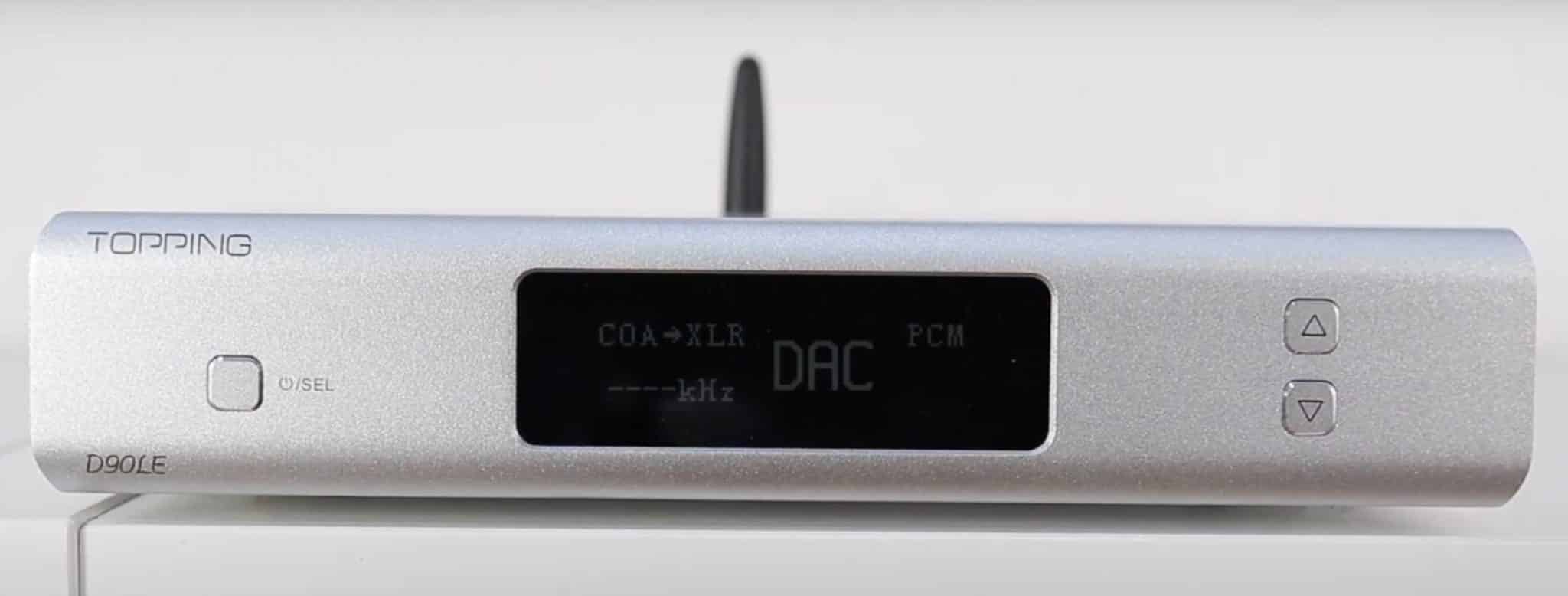


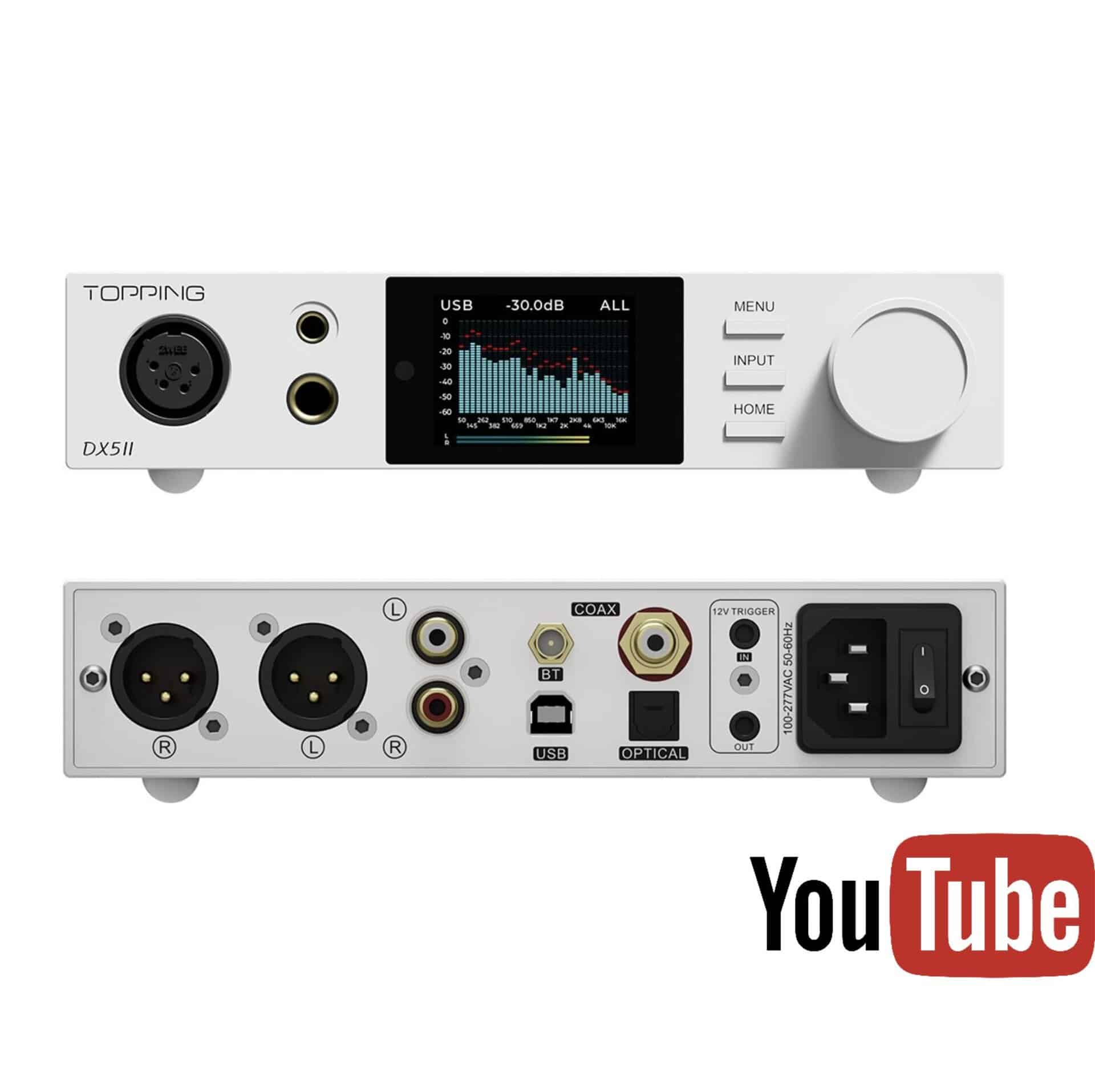
I have the Rega DAC-R and the differences on the filters on that are barely noticeable. Sometimes I think I am hearing an opening up (or closing) of the soundstage but I am not sure I am… maybe I am just looking for something to justify the fact it’s a different filter. Nor do I yet grasp terms like ‘roll off’ ‚Äì I just cannot get my head around that. It must be for people with ‘golden ears’, Paul…. maybe you have them! Topping is a name I have seen cropping up a lot more and if you say the tech is good then I will take your word for it… I just don’t know of any local dealers who stock this brand yet.
Hi John – if the Filter section isn’t your thing then sure, you can safely ignore it. I’m sure many people will follow you in that regard but I had to highlight it because I can hear a difference and the whole thing bugged me.
If you do have a general interest in the box though, I’d give the UK distributor a call (are you in the UK?) and discuss a home demo.
Yes a UK resident, Paul. The Topping is no ‘looker’ but then again nor is the Rega DAC-R. I will have to put this on my short list.
“What Electromod – in fact any good distributor – gives you is HiFi experience to draw upon, someone who knows what they’re talking about and is not a kid in a call centre. You get a local phone call if problems occur. A human voice at the end of that phone. Someone who will work with you to correct issues if any issues do occur. And so on.”
I can certainly vouch for Electromod as I dealt with them ages ago. Specifically concerning the Modi DAC. Mark looked after me when I had, not one, but two issues with the DAC. I won’t go into details but Mark was as human as a human can be these days and I felt that he actually cared about ‘fixing’ the issues. This he did and I am forever grateful for his patience and general approachability. Well done Mark…..
Anything in the Audio world is about personal choice and preference. With experience of two Topping DACs, one based on the ESS Sabre 90382QM chip and the other on the AKM 4497 (x2), my preference is for the AKM DAC chip.
The actual converter chip in a DAC is not the sole factor for determining the overall sound quality. The filter designs are, I believe, integral to the ESS chip and cannot be adapted during the overall design of the DAC itself.
Agreed on the personal choice comment and I know people who prefer the ESS although, like you, I prefer the AKM.
As for the filters? Change the chip design then 🙂 Unless there’s a law somewhere that says you can’t?
Nothing is impossible and improvements can and should always made. Both ESS and Topping (plus other brands) should take note, in my humble opinion.
My personal preference is sonic purity. What I want is for Mr Designer to do the very best to produce a brilliant product that does one thing and one thing only: to sound amazing.
Then I want the brands who shove these chips inside their boxes to stop being so bloody lazy and stop merely handing the filter names to consumers, to recognise that filters are tone controls (it’s almost like they don’t know or don’t care) and to give us and especially *beginners* a more pleasingly simple experience.
This is supposed to be a mass consumer market we’re in here and yet DACs and digital in general are still way too geeky in their form and presentation – they are mainly aimed at a niche audience. I say that because much of the HiFi industry sees digital and DACs as some sort of saviour for their cash flow. Yet all I see is a criminal lack of industry common sense in terms of recognising who the customers are and what they want from their silver boxes. Again. Apple.
I bought this item on your recommendation
Did you actually use it without the matching A90 ?
( I did buy an A90 as well actually )
Do you think it would work better without the extra
circuitry of the matching unit ?
I am not a headphone user but do have active speakers !
I haven’t found any intelligent reviews concerning both
Topping units which is somewhat frustrating for the
potential customers .
Thank you for your efforts
Hi Mark – I haven’t tested the A90 but colleagues of mine like it very much and the pair should work together well.
Thank you so much for your kind reply .
I very much enjoy your videos and articles .
Is there a massive difference between using a dedicated
dac
streamer or using Spotify on a Windows pc ?
Also if I returned the Topping D90le is there a single box
dac that would be as good . I am a rock orientated listener !